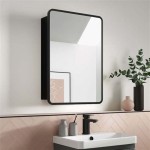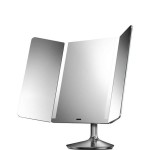How To Tell If A Mirror Frame Is Antique White
Determining if a mirror frame possesses a genuine antique white finish requires careful observation and consideration of several factors. Antique white is not a singular, standardized color, but rather a range of off-white shades characterized by subtle undertones and a softened, aged appearance. This nuanced nature necessitates a multifaceted approach to identification.
One of the primary indicators of an antique white finish is the presence of underlying hues. Genuine antique white often reveals hints of yellow, cream, gray, or even subtle pink tones beneath the surface. These undertones contribute to the overall complexity and depth of the color, distinguishing it from newer, brighter whites. Inspecting the frame in natural light is crucial for accurately assessing these undertones, as artificial lighting can distort the true color.
The texture of the finish plays a significant role in identifying antique white. Age and exposure to environmental elements often result in a slightly uneven or textured surface. This can manifest as craquelure, a network of fine cracks in the paint, or a subtle roughness to the touch. These textural variations contribute to the authentic aged appearance of the frame. Modern reproductions often lack this natural irregularity, exhibiting a smoother, more uniform finish.
Evidence of wear and tear can offer strong clues regarding the age and authenticity of a purported antique white finish. Minor imperfections, such as small chips, scratches, or areas of discoloration, often indicate genuine age. These signs of wear should appear consistent with the overall age and style of the frame and should not appear contrived or artificially created.
Examining the construction of the frame itself can provide valuable context. Antique frames were often crafted using traditional joinery methods, and the materials employed may offer clues about the frame's age. Older frames might feature hand-carved details or utilize wood joinery techniques that differ from those used in contemporary manufacturing. Researching historical frame-making practices can assist in assessing the frame's potential age and authenticity.
The type of paint used in creating the antique white finish can contribute to its distinctive appearance. Older paints were often formulated with different ingredients than modern paints, resulting in unique aging characteristics. Over time, these paints can develop a characteristic patina or exhibit subtle shifts in color. Consulting with a professional art conservator or antiques specialist can provide expert insight into paint analysis and identification.
Comparing the frame to documented examples of antique white finishes can be a helpful strategy. Utilizing resources such as antique furniture catalogs, museum collections, and reputable online databases can offer visual references for authentic antique white hues and textures. Closely inspecting the frame in question alongside these established examples can aid in determining its authenticity.
The provenance of the mirror frame, if available, can offer significant insights into its history and authenticity. Provenance refers to the documented history of ownership and origin of an object. If the frame's historical records can be traced back through reputable sources, this can provide strong evidence supporting its claimed age and authenticity. Provenance documentation can include auction records, antique dealer inventories, or family histories.
The presence of any labels, stamps, or markings on the back of the frame can offer valuable clues regarding its manufacturer, age, or place of origin. These markings can sometimes identify specific manufacturers or time periods, assisting in the authentication process. Carefully examine the frame for any such markings and research their significance to gain a deeper understanding of the frame's history.
Consulting with a qualified antiques appraiser or specialist is recommended when attempting to authenticate an antique white mirror frame. These professionals possess the expertise and experience necessary to evaluate the various factors discussed, providing a more informed assessment of the frame's age, authenticity, and potential value. Their trained eye can recognize nuances and details that may be overlooked by a less experienced observer.
Authenticating an antique white finish requires a comprehensive approach, considering the interplay of color, texture, wear, construction, paint type, and historical context. By carefully examining these elements and seeking expert advice when necessary, one can gain a greater understanding of the frame's potential authenticity and historical significance.

How To Paint A Mirror Frame Antique White Well Purposed Woman

How To Paint A Mirror Frame Antique White Well Purposed Woman

Antique White French Mirror

How To Paint A Mirror Frame Antique White Well Purposed Woman

Buy West Frames Elegance French Ornate Embossed Antique White Gold Framed Wood Wall Mirror In

Sandy Antique White Rectangle Mirror 120cm X 90cm Mirrors Exclusive

Antique White Framed Mirror 60 X 80cm Jysk Ca

White Solid Wood Antique Rectangle Wall Mirror 30x42

How To Age A Frame With Bright Gold Finish Vintage Mirror Antique Painting Frames

Antique White Rectangle Mirror Mcgee Co








